Welcome to our free classical music site

Do you write about classical music? Are you a blogger? Want to team up with Classical Connect? Send us a message, let's talk!

Do you write about classical music? Are you a blogger? Want to team up with Classical Connect? Send us a message, let's talk!
August 24, 2015. A concert at the Steans. The 2015 season at the Ravinia’s Steans Music Institute is over, and we’ve uploaded some of the recordings made at their concerts. Every year the Steans, which is Ravinia’s summer conservatory, brings to this Chicago suburb a group of talented young musicians.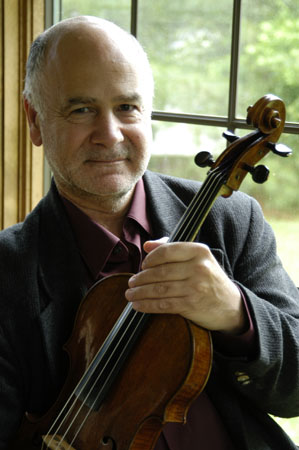 They study with some of the most renowned teachers, and also perform: the Steans concerts are the highlight of the season. The students play solo recitals and make music together, in ad hoc trios, quartets, and even octets – some of these temporary ensembles achieve very high level of musicianship (it goes without saying that technically all of them play at a very high level). And that’s how the first concert of the 2015 season was programmed: Leonardo Hilsdorf, a young Brazilian pianist, played Domenico Scarlatti’s Sonata in F Minor, K. 466 and five string players performed Mozart’s String quintet no. 4. But the most interesting and in a way quite unique part of the program was the set of Twelve Caprices for viola solo by Atar Arad. Mr. Arad, who is 70, is a world-renowned viola player; he taught at the Steans for a number of years. He was born in Tel-Aviv and started out as a violinist before switching to the viola in 1971. As a youngster he won several international competitions and made a number of highly praised recordings. In 1980 he moved to the US and joined the Cleveland Quartet. He’s also collaborated with the leading musicians of our time, among them the pianists Eugene Istomin and Emanuel Ax, violist Jaime Laredo and the cellists Yo-Yo Ma and Mstislav Rostropovich. He started composing rather late, publishing his first work in 1992 (Solo Sonata for Viola). His Twelve Caprices for viola solo were composed in 2003. During the first Steans concert, several violists took turns playing all twelve. Mr. Arad played one of them. Here’s the First caprice, performed by the Russian violist Georgy Kovalev. The Third Caprice is played by Mr. Arad, and Caprice no. 11 – by Dana Kelley (here).
They study with some of the most renowned teachers, and also perform: the Steans concerts are the highlight of the season. The students play solo recitals and make music together, in ad hoc trios, quartets, and even octets – some of these temporary ensembles achieve very high level of musicianship (it goes without saying that technically all of them play at a very high level). And that’s how the first concert of the 2015 season was programmed: Leonardo Hilsdorf, a young Brazilian pianist, played Domenico Scarlatti’s Sonata in F Minor, K. 466 and five string players performed Mozart’s String quintet no. 4. But the most interesting and in a way quite unique part of the program was the set of Twelve Caprices for viola solo by Atar Arad. Mr. Arad, who is 70, is a world-renowned viola player; he taught at the Steans for a number of years. He was born in Tel-Aviv and started out as a violinist before switching to the viola in 1971. As a youngster he won several international competitions and made a number of highly praised recordings. In 1980 he moved to the US and joined the Cleveland Quartet. He’s also collaborated with the leading musicians of our time, among them the pianists Eugene Istomin and Emanuel Ax, violist Jaime Laredo and the cellists Yo-Yo Ma and Mstislav Rostropovich. He started composing rather late, publishing his first work in 1992 (Solo Sonata for Viola). His Twelve Caprices for viola solo were composed in 2003. During the first Steans concert, several violists took turns playing all twelve. Mr. Arad played one of them. Here’s the First caprice, performed by the Russian violist Georgy Kovalev. The Third Caprice is played by Mr. Arad, and Caprice no. 11 – by Dana Kelley (here).
For those who would rather listen to something more traditional, here’s the above-mentioned Sonata by Domenico Scaralli, and hear – the Mozart.Permalink
August 17, 2015. Claude Debussy. Several composers were born this week, among them Antonio Salieri and Georges Enesco, but of course all of them are overshadowed by Claude Debussy. Before we turn to Debussy, though, we want to mention Nicola Porpora. A Baroque opera composer and teacher of the famous castrato Farinelli and also of Franz Joseph Haydn, Porpora was born on this day in 1686. He is almost forgotten these days, not entirely deservedly, as you can judge for yourself by this aria from his opera Polifermo. Philippe Jaroussky is the countertenor. Now back to Debussy.
Claude Debussy was born in Saint-Germain-en-Laye, near Paris, on August 22nd, 1862, the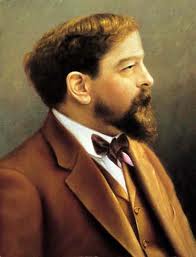 eldest of five children. His father owned a shop selling china and crockery and his mother was a seamstress. In 1867, the family moved to Paris but when the Franco-Prussian war broke out a few years later in 1870, his mother sought refuge with an in-law in Cannes. While there, Debussy began to take piano lessons from a local elderly Italian violinist. He progressed rapidly on the instrument and his talent for music soon became quite evident. Two years later, in 1872, at the age of ten, he was enrolled in the prestigious Paris Conservatoire.
eldest of five children. His father owned a shop selling china and crockery and his mother was a seamstress. In 1867, the family moved to Paris but when the Franco-Prussian war broke out a few years later in 1870, his mother sought refuge with an in-law in Cannes. While there, Debussy began to take piano lessons from a local elderly Italian violinist. He progressed rapidly on the instrument and his talent for music soon became quite evident. Two years later, in 1872, at the age of ten, he was enrolled in the prestigious Paris Conservatoire.
Debussy spent eleven years at the Conservatoire and studied with some of the leading musicians of France. Despite his talent, however, Debussy was headstrong and showed a stubborn preference for the unusual and experimental. His early compositions often drew the ire of his professors and were heavily criticized for his apparent disregard of the Conservatoire’s teaching. Nevertheless, in 1884, Debussy won the Prix de Rome with his composition L’enfant prodigue and the following year he left for the Villa Medici in Rome to continue his studies. According to his letters, Debussy found the artistic and cultural atmosphere of Rome stifling. He eventually composed four pieces, however, the most notable among them being the cantata La demoiselle élue. The work drew sharp criticism from the French Academy who called it “bizarre.” It is, however, the first piece to give a glimpse of Debussy’s emerging mature style.
During 1888-9, Debussy traveled to Bayreuth and was for the first time exposed to Wagner’s operas. Like many other young musicians of the time, he was inspired by Wagner’s overt emotionalism, striking harmonies and handling of musical form. Around this time, he also found a like spirit in Eric Satie, who shared Debussy’s experimental approach to composition. By the 1890s, the infatuation with Wagner’s music had subsided and Debussy mature style began to take a more definite form. This style was greatly influenced by the Symbolist movement in the visual and literary arts, which developed as a revolt against realism and the heroic imagery of Romanticism. Symbolism influenced him more than the music of other composes, although, in addition to Wagner, he found inspiration in the music of Russia, particularly from “The Five.”
In 1894, Prélude à l’après-midi d’un faune, a symphonic poem based on a poem by Stéphane Mallarmé, premiered in Paris. Considered controversial at the time, the piece was later responsible for establishing Debussy as one of the leading composers of the burgeoning Modern era. Later, in 1902, after ten years of work, he produced his only opera, Pelléas et Mélisande. It premiered at the Opéra-Comique in April of that year and was an immediate success. With his fame growing, Debussy was engaged as a conductor throughout Europe mainly performing his own works, including his multi-movement work La Mer.
Debussy died on March 25th, 1918 from cancer amidst German aerial and artillery bombardment of Paris during World War I. Because of the fighting, it was impossible to hold a public funeral for one of France’s leading artistic figures and consequently his funeral procession made its way through abandoned streets as German artillery shells exploded throughout the city. His music went on to inspire some the leading composers of the 20th century, among theme Maurice Ravel, Igor Stravinsky and Olivier Messiaen, as well as musicians in jazz, such as George Gershwin and Duke Ellington.
We have almost 200 recording of Debussy’s work, so browse our library and you’ll find something you like. In the mean time, here are Estampes, performed by the pianist Katsura Tanikawa. Permalink
August 10, 2015. Five French composers. We missed some interesting anniversaries last week and several more are coming in the next several days. Out of these we’ve selected a group of composers that have two things in common: all of them are French and all were born within 50 years in the second half of the 19th century or early in the 20th. They are, in chronological order, Cécile Chaminade, Gabriel Pierné, Reynaldo Hahn, Jacques Ibert and André Jolivet. While none of them reached the level of Debussy or Ravel, all were very talented.
Cécile Chaminade, the only woman in this group, was born on August 8th of 1857 in Paris. Her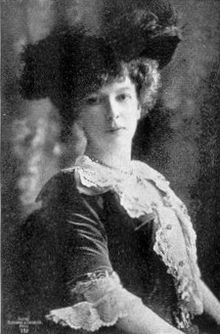 first music lessons came from her mother, a pianist and a singer. Later she studied composition with Benjamin Godard. She started composing very young (when she was eight, she played some music for Georges Biset) and gained prominence with the publication of Piano Trio in 1880. An excellent pianist, she toured England many times, playing mostly her own music and became very popular there. In 1908 she went to the US, the country of “Caminade fan clubs” and played in 12 cities. Between 1880 and 1890 Chaminade composed several large orchestral compositions and also music for piano and orchestra. In the following period she scaled down, limiting herself to piano character pieces, of which she wrote more than 200. Many of them are charming though they became dated even during her time (Chaminade lived till 1944). Here’s her Automne, it’s performed by the British-Canadian pianist Valerie Tryon.
first music lessons came from her mother, a pianist and a singer. Later she studied composition with Benjamin Godard. She started composing very young (when she was eight, she played some music for Georges Biset) and gained prominence with the publication of Piano Trio in 1880. An excellent pianist, she toured England many times, playing mostly her own music and became very popular there. In 1908 she went to the US, the country of “Caminade fan clubs” and played in 12 cities. Between 1880 and 1890 Chaminade composed several large orchestral compositions and also music for piano and orchestra. In the following period she scaled down, limiting herself to piano character pieces, of which she wrote more than 200. Many of them are charming though they became dated even during her time (Chaminade lived till 1944). Here’s her Automne, it’s performed by the British-Canadian pianist Valerie Tryon.
Gabriel Pierné was born in Metz, Lorraine on August 16th, 1863. In 1870, during the Franco-Prussian war, Metz was captured by the Germans, and the Piernés fled to Paris. Gabriel entered the Paris Conservatory, where among his teachers were Jules Massenet (composition) and Cesar Frank (organ). In 1910 Pierné, who was also a prominent conductor, let the orchestra during the premier of Stravinsky’s The Firebird, which was staged by the Ballet Russes. His own music was not as adventuresome: it was influenced by Camille Saint-Saëns and, to alesser degree, Debussy and Ravel. Here’s the first movement (Allegretto) of Pierné’s Sonata op.36 for violin and piano. The young French violinist Elsa Grether is accompanied by Eliane Reyes on the piano.
Reynaldo Hahn wasn’t French by birth but he took on the French nationality later in his life. He was born in Caracas, Venezuela, on August 9th of 1874. His father was a German-Jewish engineer, his mother came from a Spanish family. When Reynaldo, the youngest of 12 children, was four, the family moved to Paris. In 1885 Hahn entered the Paris Conservatory, where one of his teachers was the same Jules Massenet. At the Conservatory Hahn befriended Ravel and Cortot, and through them, many writers and musicians. A closeted homosexual, Hahn met a young writer, Marcel Proust in 1894; they became good friends and lovers. Hahn is best known for his wonderful songs, but that wasn’t his only creative genre. Between 1902 and 1902 he wrote 53 “Poèmes pour piano,” which he collected under the title of Le Rossignol Éperdu (The Distraught Nightingale). Here’s the piece no. 37, L'Ange Verrier (The glass Angel); it’s performed by the pianist Earl Wild.
Jacques Ibert, probably the most popular of the five, was born on August 15th of 1890. We’ve written about him a number of times, so to commemorate we’ll play his Concertino da Camera for Alto Saxophone and Eleven Instruments from 1935, transcribed for saxophone and piano. Xavier Larsson Paez is on the saxophone, with Yoko Yamada-Selvaggio on the piano.
André Jolivet is the youngest and the most adventuresome of the five. He was born on August 8th of 1905 in Paris. In his childhood he studied the cello but never went to the conservatory (he did study composition with Paul Le Fem, a composer and critic). In his youth Jolivet was influenced by Debussy and Ravel, but it all changed when he became familiar with atonal music: in December of 1927 he attended a concert at the Salle Pleyel during which several Schoenberg piece were performed and that changed his life. Soon after he became a pupil of Edgard Varèse, an influential French-American avant-garde composer. He also befriended Olivier Messiaen, who, being better known in those years, helped Jolivet by promoting his music. We’ll Jolivet’s Concerto pour Ondes Martenot. Ondes Martenot (Waves of Martenot) is an early electronic instrument, invented in 1928 by Maurice Martenot. The soloist in this recording is Jeanne Loriod, the sister of Yvonne Loriod, the second wife of Messiaen. The composer conducts the Orchestre Philharmonique de l`ORTF.Permalink
August 3, 2015. John Field. Last week we missed the anniversaries of Enrique Granados and John Field; several more are coming this week, among them the 105th anniversary of the American composer William Schuman and those of two Frenchmen, Reynaldo Hahn, a songwriter, and a very interesting 20th century composer André Jolivet. We’ll come back to all of them but today we’ll write – for the first time – about Field.
Under Clementi's tutelage, Field rose to become an in-demand performer in London. In 1795, Clementi published his pupil's first compositions. Field's first significant work, his Piano Concerto No. 1, was premiered in London on February 7th, 1799 with the composer himself as soloist. In 1801, Clementi published (and was also the dedicatee of) three piano sonatas by Field, the only examples of conventional Classical works in Field's output.
In the summer of 1802, master and pupil left London traveling to several of Europe's major cities. Arriving first in Paris, they then traveled on to Vienna. While in Vienna, Field briefly took counterpoint lessons from Johann Georg Albrechtsberger, a friend of Haydn’s and teacher of Beethoven, among his numerous other pupils. By early winter, Clementi and Field had arrived in St. Petersburg. Field was captivated by the artistic atmosphere of the city and wished to stay (it is also possible that he saw St. Petersburg as his first real chance to escape from the shadow of his master and begin his own independent career). In June 1803, Clementi left St. Petersburg but not without setting up a teaching position for his pupil. Furthermore, Clementi went so far as to "appoint" Field as his deputy so that he could receive high fees from the position.
Following Clementi's departure, Field took up an active schedule of performing. Consequently, nearly all the publications of his music during his first years in Russia were reprints of older works. However, around 1808, he began to actively compose again, establishing a unique personal style that came to hold a significant influence over piano music of the Romantic period. Characteristic of this style are his many nocturnes, a genre that Field pioneered. At the same time he set the table for the various forms of character pieces for piano that evolved over the coming decades and were perfected at the hands Mendelssohn, Schumann and Brahms. Field's nocturnes were immensely influential on Frédéric Chopin, who was largely responsible for expanding and popularizing the nocturne.
By the mid-1820s, Field's health began to deteriorate at least somewhat in part to his extravagant lifestyle. Suffering from cancer, he returned to London in September 1831 for medical treatment. He remained in England for an extended time and while there met Felix Mendelssohn and Ignaz Moscheles. Leaving England, he once again undertook a concert tour of European cities but, inevitably, ended up in a hospital in Naples for nine months. Eventually returning to Russia, he gave his last concert in March 1836. Nearly a year later, on January 23rd, 1837, Field died from pneumonia.
Here’s Nocturne no. 1 in E-flat Major, performed by the young pianist and conductor Bryan Wagorn, and here – Nocturne no. 5 in B-flat Major, played by John O’Connor.Permalink
July 27, 2015. Brahms’s Intermezzi op. 117. Enrique Granados and Hans Werner Henze were born this week, Granados on July 27th of 1867 and Henze – on August 1st of 1926. Both are very interesting, each in his own way, and we’ve commemorated them on previous occasions. Today,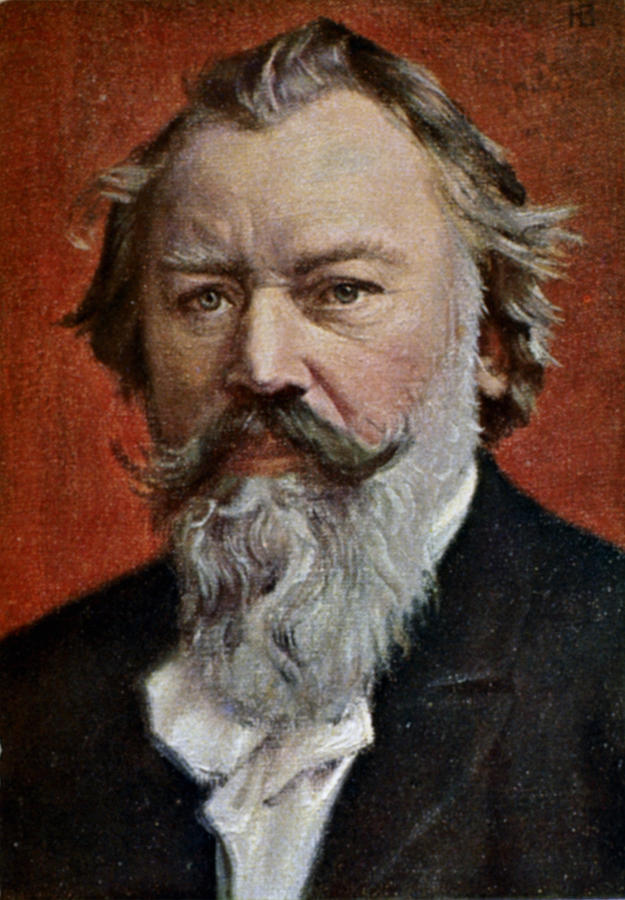 though, we’ll continue the traversal of the late piano works of Johannes Brahms, moving to his Intermezzi op. 117. We’ll illustrate them with the performances by thee young pianists: the Israeli Yael Kareth and two Americans, Lucille Chung and Evan Mitchell. ♫
though, we’ll continue the traversal of the late piano works of Johannes Brahms, moving to his Intermezzi op. 117. We’ll illustrate them with the performances by thee young pianists: the Israeli Yael Kareth and two Americans, Lucille Chung and Evan Mitchell. ♫
In contrast to the neighboring opp. 116 and 118, Brahms comprised op. 117 of only three intermezzi. However, these three works are of an unmistakably greater import than the similar works of those two collections (excepting, of course, the grim E-flat minor Intermezzo). Despite their subdued tone, they carry a weight that could be hardly found within either op. 116 or op. 118, yet together form a fulfilling whole. The outer pieces span complete ternary forms, while the middle piece traces a terse, yet rich, sonata design. They also hearken back to the earlier Ballades in the weight and manner of their discourse, with the first taking its cue from an actual Scots lullaby.
The first of the triptych of intermezzi is in E-flat major (here). Heading this gentle Andante is the opening lines of “Lady Anne Bothwell’s Lament,” taken from Johann Herder’s German translation: “Schlaf sanft mein Kind, schlaf sanft und schön! Mich dauert’s sehr, dich weinen sehn” (“Sleep sweetly my child, sleep sweetly and beautifully! It grieves me much to see you weep”). The opening melody, presented in a middle voice and cradled between gently rocking octaves, could not be a more apt fit for Herder’s lyric. After an initial statement, Brahms begins to restate the melody. However, as the harmonies begin to change so does the melody. The cadence in the fourth measure is changed, passing briefly into the key of the dominant, before returning to the tonic of E-flat in the next. Instead of proceeding with the rest of the melody, Brahms presents a varied statement of the melody’s first four measures, which is now accompanied by gently syncopated chords in a 3/4 meter against the melody’s 6/8. Though the rhythmic disturbance evaporates in the next cadence, the music modulates without warning into the key of A-flat minor, and the opening phrase of the melody is the presented in austere octaves. This sudden melancholic passage serves as a transition into the doleful central episode. The minor key is maintained, yet the tempo slackens somewhat. Arpeggios in the low register of the piano accompany a melodic motif cleverly extracted from the second measure of the principal melody. During the course of the episode, the melody’s initial stepwise descent also returns against eerie harmonies that suggest a return to E-flat, but maintain the shadowy hues of the minor by the obstinate presence of D-flat. Four times this head motif returns of which the last once again ever so slightly disturbs the rhythmic feel of the music and inevitably brings about the reprise of the opening section. While the form of the opening is followed, the reprise is varied. The melody first appears in octaves and is passed between hands, as the accompanying chords pass from the resonant low register to the ethereal treble, but then later is embellished modestly with sixteenth notes. Interestingly, the rhythmic disturbance of contrasting meters is, in the reprise, nearly eliminated, appearing only in a single measure before a brief coda. In place of the austere minor statement that presaged the episode, the major key is maintained as Brahms makes use of the melody’s memorable cadential figure to bring the lullaby to a close. (Continue reading here).Permalink
July 20, 2015. Pietro Ottoboni. In the late 17th – early 18th centuries Rome there were no Ministries of culture or National Endowments for the Art; nonetheless, the musical scene flourished, together with Venice and Naples, Rome was one of the three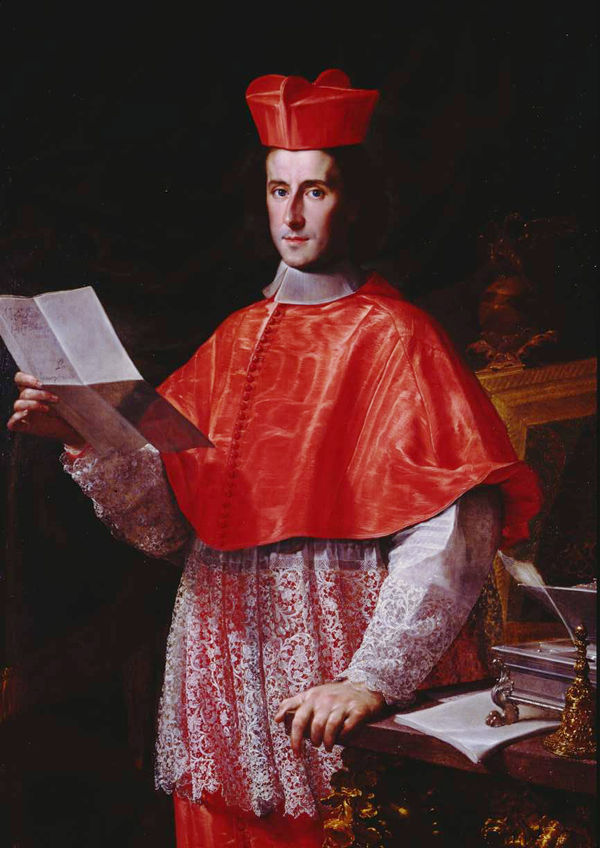 world music centers. It was partly a natural development, with the Baroque maturing and a new art of opera gaining popularity. Still, music would probably never have attained such an exceptional level and wide audience were it not for several extraordinary patrons. Queen Christina of Sweden was one, and after her death in 1689, Cardinal Pietro Ottoboni became the most important benefactor in Rome. Pietro Ottoboni was born in Venice on July 2nd of 1667 into a noble family. His granduncle, also Pietro Ottoboni, became Pope Alexander VIII in 1689. The Pope made his 22-year-old nephew cardinal and vice-chancellor of the Church. The role of the Chancellor was to collect money for the papal army, so one can imagine that the young cardinal came into a very lucrative position. Cardinal Ottoboni was also a cardinal-bishop of a number of places, and his annual income from different sources was estimated at 50,000 scudi, an enormous sum. A Roman scudo of the time contained approximately 3.3 grams of gold. If we convert it into the current price of gold, the cardinal’s income amounts to about six million dollars. But even that was not enough: Ottoboni was a musical fanatic and spend every penny and them some to satisfy his passion. He was constantly in debt, and when he died in 1740, his estate, with its great collection of paintings and a large music library, had to be liquidated.
world music centers. It was partly a natural development, with the Baroque maturing and a new art of opera gaining popularity. Still, music would probably never have attained such an exceptional level and wide audience were it not for several extraordinary patrons. Queen Christina of Sweden was one, and after her death in 1689, Cardinal Pietro Ottoboni became the most important benefactor in Rome. Pietro Ottoboni was born in Venice on July 2nd of 1667 into a noble family. His granduncle, also Pietro Ottoboni, became Pope Alexander VIII in 1689. The Pope made his 22-year-old nephew cardinal and vice-chancellor of the Church. The role of the Chancellor was to collect money for the papal army, so one can imagine that the young cardinal came into a very lucrative position. Cardinal Ottoboni was also a cardinal-bishop of a number of places, and his annual income from different sources was estimated at 50,000 scudi, an enormous sum. A Roman scudo of the time contained approximately 3.3 grams of gold. If we convert it into the current price of gold, the cardinal’s income amounts to about six million dollars. But even that was not enough: Ottoboni was a musical fanatic and spend every penny and them some to satisfy his passion. He was constantly in debt, and when he died in 1740, his estate, with its great collection of paintings and a large music library, had to be liquidated.
Ottoboni resided in the Palazzo della Cancelleria; there he maintained the best singers in town and one of the finest orchestras. In 1689 he reopened the palace theater, which had stayed closed for the previous 15 years. Around 1710 Ottoboni’s court architect, Filippo Juvarra, rebuilt it into the most technically advanced opera theater in Rome, capable of staging lavish productions. This theater saw premiers of operas by Alessandro Scarlatti, Antonio Caldara and many other popular composers of the day. Ottoboni spread his patronage far and wide: he was also the major benefactor of Congregazione di S Cecilia (now the Accademia Nazionale di Santa Cecilia, Italy’s premier conservatory), and Accademia Filarmonica di Bologna. But even that was not all: the Cardinal was also a very prolific librettist. As a church hierarch he couldn’t publish them under his own name, especially considering that in 1701 Pope Clement XI banned all public opera performances, but many librettos, whether to operas or oratorios and cantatas, are attributed to him. Ottoboni was full of vigor, and if music was the main love of his life, it was definitely not the only one: he’s said to have fathered 60 or 70 children.
Many Italian composers benefited from Ottoboni’s generosity, among them Arcangelo Corelli, Alessandro Scarlatti, Antonio Vivaldi, Antonio Caldara and Tomaso Albinoni. The first three are very popular, so we’ll present the works of Caldara and Albinoni. Antonio Caldara was born in Venice in 1670. Here’s an aria from his opera Il Martirio di Santa Caterina , which was premiered in Ottoboni’s theater in 1708. Cecilia Bartoli is the mezzo, with Les Musiciens du Louvre; Marc Minkowski conducting. Albinoni, also a Venetian, was one year younger than Caldara. In his time he was also famous as an opera composer, but most of his operas were lost and are practically never performed today. “Albinoni’s Adagio in G minor” became a pop phenomenon, except that it is a fake, written by Remo Giazotto! Here is a real Albinoni: Trio sonata op. 1, no. 1. The cycle of 12 trio sonatas opus 1 was dedicated to Pietro Ottoboni. The performers in this recording are Parnassi Musici.
Permalink